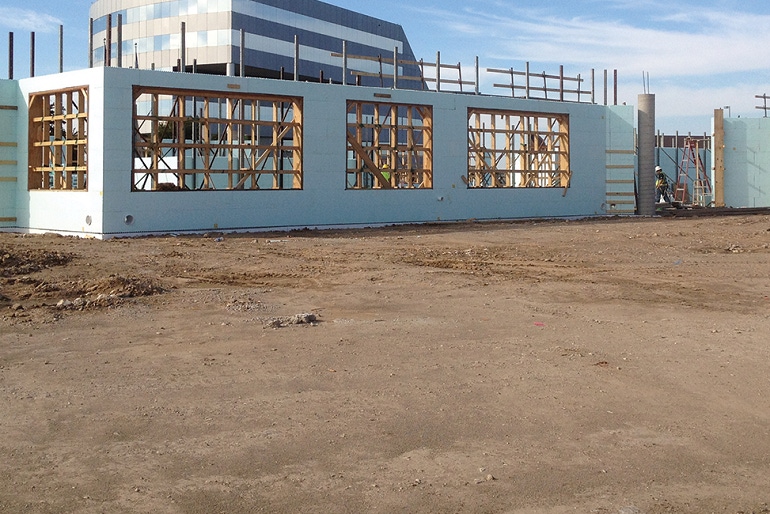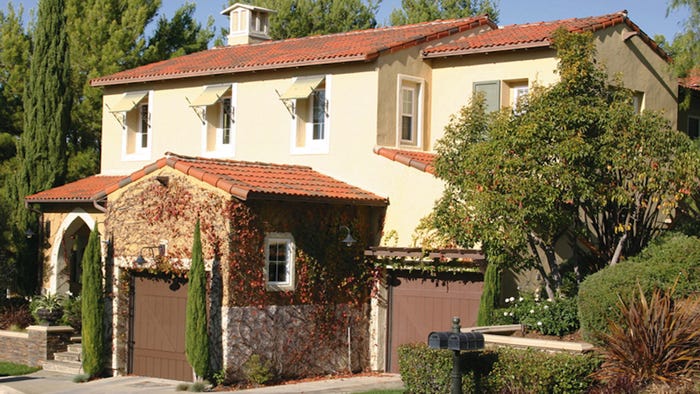Concrete and Masonry are Green
Green building is a trend that will not go away. The Tennessee Concrete Association (TCA) is in the process of working towards certification of its new office near Nashville in the International Living Future Institute’s Living Building Challenge.

For the past decade, our industries have bemoaned the slow progress of inclusion of concrete and masonry into the green building market. Despite hours of technical committee meetings, board room presentations, and proof by mathematical calculations, only a handful of green-building designers are willing to embrace concrete and masonry on their projects.
Green building is a trend that will not go away. Many pre-Covid 19 economic forecasts included double digit gains in market share for green buildings within the next five years. There are signs this trend will continue. Recently experts (https://www.eco-business.com/news/standing-tall-how-green-buildings-are-adapting-to-the-post-covid-era/) predicted that the pandemic has actually raised awareness for healthier buildings. Green construction is transforming from a point system into a systemic performance review.
So how can masonry and concrete participate in upcoming discussions for green building? One approach is to prove our products can be an important part of the green building system.
The Tennessee Concrete Association (TCA) is taking steps to do just that. They are in the process of working toward certification of their new office near Nashville in the International Living Future Institute’s Living Building Challenge. Some design professionals consider The Living Building Challenge to be the world’s most rigorous standard for green buildings.
More than gathering LEED points, Living Buildings are systems that aim for net-zero or net-positive energy, are free of toxic chemicals, and have a low energy footprint. To be certified under the Challenge, green buildings must meet these performance requirements over 12 months of continuous occupancy. The three main criteria are that Living Buildings must demonstrate net positive energy, net positive water, and net positive waste.
A Learning Experience
The TCA project is in its final design stage, with construction plans almost ready for final approval. A few weeks ago, TCA staff updated its membership on the challenges they have met, and the hurdles still ahead. The participants discussed site considerations, local ordinances, and water usage. As ready-mix producers. these are the same concerns that challenge their own operations on a daily basis. The lessons from this certification process can provide future insights.
TCA’s new headquarters will provide regional training to contractors, designers, and engineers. All will walk away with a new awareness of concrete’s role in green building. And just as important, the nearby community will benefit. First, by the increased awareness of TCA’s efforts (and those of its members) to demonstrate their commitment to sustainability. And second, by the project’s long-term performance.
Gregg Lewis, National Ready Mixed Concrete Association’s vice president for promotion strategy and communication, agrees. He says he will be following TCA’s project and believes that it embodies the kind of innovation that the ready-mixed concrete industry has always championed. “NRMCA believes that the future of concrete will increasingly address issues of sustainability.”
Living Building Materials
Other industry participants are involved in the International Living Future Institute’s efforts through their Declare program. The ILFI has been offering a green product certification program for about eight years. The third-party review program is aligned with other green initiatives including LEED. (https://living-future.org/declare/declare-about/#for-manufacturers)
At the time of this writing, three World of Concrete exhibitors have registered products with Declare: Prosoco, Sherwin Williams, and Nudura. (TCA plans to use Nudura insulating concrete forms in their new headquarters.)
More to come
As with all new projects, it’s important to watch the development, so we’ve invited TCA to share their experiences with World of Concrete attendees in January. By that time, many of the small details will be worked out. Promoters, producers, and contractors will want to learn how the TCA team is adapting to the new green norm. We will keep you aware of the details.
In the meantime, please send me examples of how you are participating in development of the green building market. We’d like to help share the successes and learning points with the World of Concrete community. But just as important, I’m sure that there must be other industry initiatives focused on green building.
To learn more about the Living Building Challenge and to see examples of recent certifications go to the International Living Future Institute’s website.
Read more about:
sustainabilityAbout the Author(s)
You May Also Like




